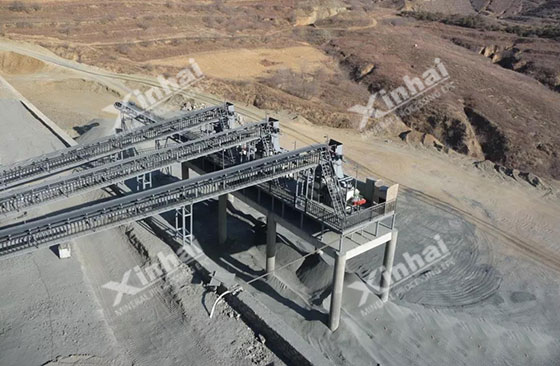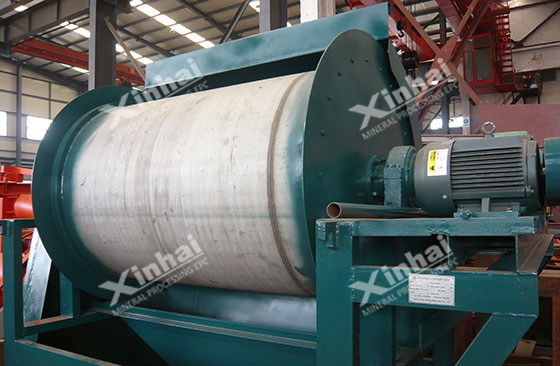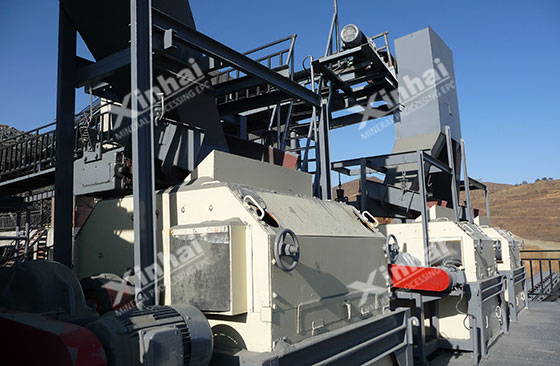Magnetic separation method is a common mineral processing method of separation. The magnetic separation method is to achieve the separation in the non-uniform magnetic field of magnetic separators according to the magnetic differences among various minerals.
Use the table of contents below to navigate through the guide:
01Introduction of Magnetic Separation Method
Different minerals have different permeability, so they have different performances when they pass through the magnetic field.
The minerals with high magnetic permeability are sucked up by the disk and collected by the Aggregate funnel, on the contrary, the minerals with low magnetic permeability are taken out as tailings to be separated.
The magnetic separation method just takes advantage of this property of minerals.
In general, the magnitude of the magnetic force that a magnetic-particle receives in a magnetic field is proportional to the strength and gradient of the magnetic field.
02Types of Mineral Suitable for Magnetic Separation Method
Generally, the selected minerals can be classified into four kinds according to the specific magnetic susceptibility (x):
1. Strong magnetic minerals, which the susceptibility x>3000×10 m/kg. Such as magnetite, titanomagnetite and pyrrhotite;
2. Medium magnetic minerals, which the susceptibility x = (600 ~ 3000) × 10 m/kg. Such as ilmenite, artifacts and semi-artificial hematite;
3. Weak magnetic minerals, which the susceptibility x = (15 ~ 600) × 10 m/kg. Such as hematite, mirror iron ore, siderite, limonite, pyrolusite, hard manganese ore and wolframite;
4. Non-magnetic minerals, which the susceptibility x< 15×10 m/kg. Such as scheelite, quartz, long stone, galena, gold and fluorite.

03Magnetic Separator Used in the Magnetic Separation Method
There are many types of magnetic separators, which are usually classified and named according to the strength of the magnetic field, the type of magnetic media, the working medium and the structural characteristics.
According to the strength of the magnetic field, the magnetic separators can be divided into three kinds:
1. Low-intensity magnetic separator, which is used to process strong magnetic minerals. The magnetic field strength of the working gap is (0.6 ~ 1.6)×10 A/m.
2. Medium intensity magnetic separator, which is used to process medium magnetic minerals. The magnetic field strength of the working gap is (1.6 ~ 4.8)×10 A/m.
3. High-intensity magnetic separator, which is used to process weak magnetic minerals. The magnetic field strength of the working gap is (4.8 ~ 20.8)×10 A/m.
4. Super-conducting Separators, which is used to process weaker magnetic minerals. The magnetic field strength can reach (28 ~ 40)×10 A/m.

According to the working medium, the magnetic separator can be divided into the dry magnetic separator and wet magnetic separator. The structure of the magnetic separator is affected by the magnetic strength and particle size of the selected minerals. In addition to a magnetic pulley for selecting the bulk material, the general size of the material can be processed from mm to micron.

Although the magnetic separation method is a relatively simple separation process, we shouldn't blindly select the magnetic separation process and magnetic separator according to the mineral type. It is recommended to seek technical support to ensure that the magnetic separation method matches the minerals and the mineral processing indicators are not affected.


 marketing@ytxinhai.com
marketing@ytxinhai.com  0086 13810327080
0086 13810327080 






































































































 CHAT
CHAT MESSAGE
MESSAGE



